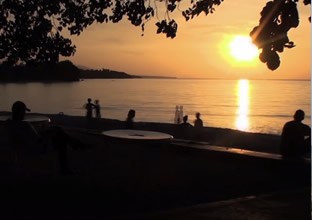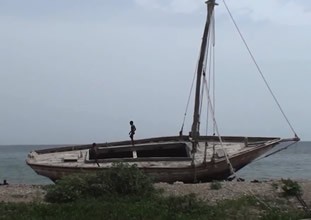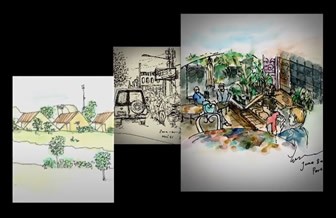Helping Haiti - Economic Development Videos

Video can’t be displayed
This video is not available.

Video can’t be displayed
This video is not available.

Video can’t be displayed
This video is not available.
These videos produced by the Association of Collegiate Schools of Architecture (ACSA) provide a synopsis of a multi-partner, public interest design education and service learning project in Petite Riviere De Nippes, Haiti were MOM is presently working. The project was a collaborative effort of the Association of Collegiate Schools of Architecture (ACSA), Howard University and the University of Illinois at Urbana Champaign in partnership with Mercy Outreach Ministry International.
MOM wanted to bring attention to the dire living conditions found in the rural areas of Haiti by partnering with universities in the hope that they would collaborate with MOM and work to implement programs and projects that would bring socio-economic relief while at the same time provide an invaluable educational experience for their students and professors.
A graduate (Master of City Planning) of the Howard University School of City Planning in 1975, I never forgot the lessons learned about housing in developing countries from one of my professors, Prof. Victor Dzidzenyo, who is now the Associate Dean, College of Engineering, Architecture and Computer Sciences, and the Director of the School of Architecture & Design at Howard University. It was his passionate teaching about the need for alternative housing for the poor that found its way into my very being and I have never forgotten it.
While preparing for my doctoral dissertation in 1994-45 at the Howard University School of Divinity , I asked Prof. Dzidzienyo to serve as one of my advisors on my dissertation team. He gladly accepted and under his guidance, my dissertation entitled Church Mission As A Catalyst For The Transmission of Technology For Sustainable Community and Economic Growth in Developing Countries was successfully completed and submitted for my degree of Doctor of Ministry in 1995. We have remained in constant contact since that time developing plans and projects for Haiti along with a fellow colleague, Dr. Fritz Olivier, the founder and President of the GOC University in Port-a-Prince, Haiti.
I met Prof. Bradford C. Grant when he was serving as the Interim Dean and Director of the School of Architecture & Design along with Prof . Edward Dunson, the Associate Professor & Chairman, Department of Architecture. The four of us collaborated and the partnership became a reality with the successful submission of a proposal to the Fetzer Foundation by Prof. Grant.
Ten students, accompanied by four advisors and the founder of Mercy Outreach Ministry International, traveled from the United States to Haiti. On the ground, students from Haiti’s architecture school at Université GOC aided the group. An eclectic mix of students from the US with varied international backgrounds interacted with numerous Haitian students over the two-week visit.
Students visited the town, and communicated one-on-one with the residents, entrepreneurs, government officials, and NGOs, to develop an understanding of the daily workings of the community as well as to document its existing conditions and infrastructure. The studio aimed to develop designs that could be constructed, efficiently used, and maintained by local individuals in Petite-Rivière-de-Nippes. Various methods of documentation and observation were used to help thoroughly understand the present conditions in Petite-Rivière-de-Nippes, such as the limits of existing infrastructure and planning efforts, the nature of education and entrepreneurial activity, local customs and culture, and the needs and desires of residents and government officials in the community. The final work of the studio ranged from considering various growth-pattern scenarios for the community, to design for a market, to designs for a media center and a farming co-op. These were developed and designed collaboratively among studio participants in order to achieve a comprehensive and integrated proposal for the town of Petite-Rivière-de-Nippes.
MOM wanted to bring attention to the dire living conditions found in the rural areas of Haiti by partnering with universities in the hope that they would collaborate with MOM and work to implement programs and projects that would bring socio-economic relief while at the same time provide an invaluable educational experience for their students and professors.
A graduate (Master of City Planning) of the Howard University School of City Planning in 1975, I never forgot the lessons learned about housing in developing countries from one of my professors, Prof. Victor Dzidzenyo, who is now the Associate Dean, College of Engineering, Architecture and Computer Sciences, and the Director of the School of Architecture & Design at Howard University. It was his passionate teaching about the need for alternative housing for the poor that found its way into my very being and I have never forgotten it.
While preparing for my doctoral dissertation in 1994-45 at the Howard University School of Divinity , I asked Prof. Dzidzienyo to serve as one of my advisors on my dissertation team. He gladly accepted and under his guidance, my dissertation entitled Church Mission As A Catalyst For The Transmission of Technology For Sustainable Community and Economic Growth in Developing Countries was successfully completed and submitted for my degree of Doctor of Ministry in 1995. We have remained in constant contact since that time developing plans and projects for Haiti along with a fellow colleague, Dr. Fritz Olivier, the founder and President of the GOC University in Port-a-Prince, Haiti.
I met Prof. Bradford C. Grant when he was serving as the Interim Dean and Director of the School of Architecture & Design along with Prof . Edward Dunson, the Associate Professor & Chairman, Department of Architecture. The four of us collaborated and the partnership became a reality with the successful submission of a proposal to the Fetzer Foundation by Prof. Grant.
Ten students, accompanied by four advisors and the founder of Mercy Outreach Ministry International, traveled from the United States to Haiti. On the ground, students from Haiti’s architecture school at Université GOC aided the group. An eclectic mix of students from the US with varied international backgrounds interacted with numerous Haitian students over the two-week visit.
Students visited the town, and communicated one-on-one with the residents, entrepreneurs, government officials, and NGOs, to develop an understanding of the daily workings of the community as well as to document its existing conditions and infrastructure. The studio aimed to develop designs that could be constructed, efficiently used, and maintained by local individuals in Petite-Rivière-de-Nippes. Various methods of documentation and observation were used to help thoroughly understand the present conditions in Petite-Rivière-de-Nippes, such as the limits of existing infrastructure and planning efforts, the nature of education and entrepreneurial activity, local customs and culture, and the needs and desires of residents and government officials in the community. The final work of the studio ranged from considering various growth-pattern scenarios for the community, to design for a market, to designs for a media center and a farming co-op. These were developed and designed collaboratively among studio participants in order to achieve a comprehensive and integrated proposal for the town of Petite-Rivière-de-Nippes.